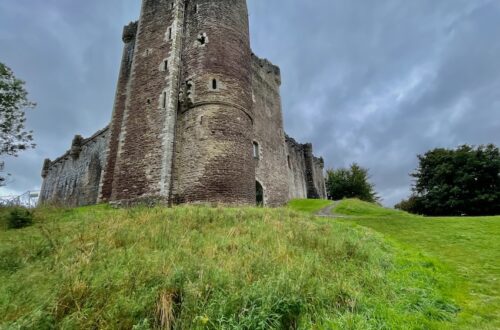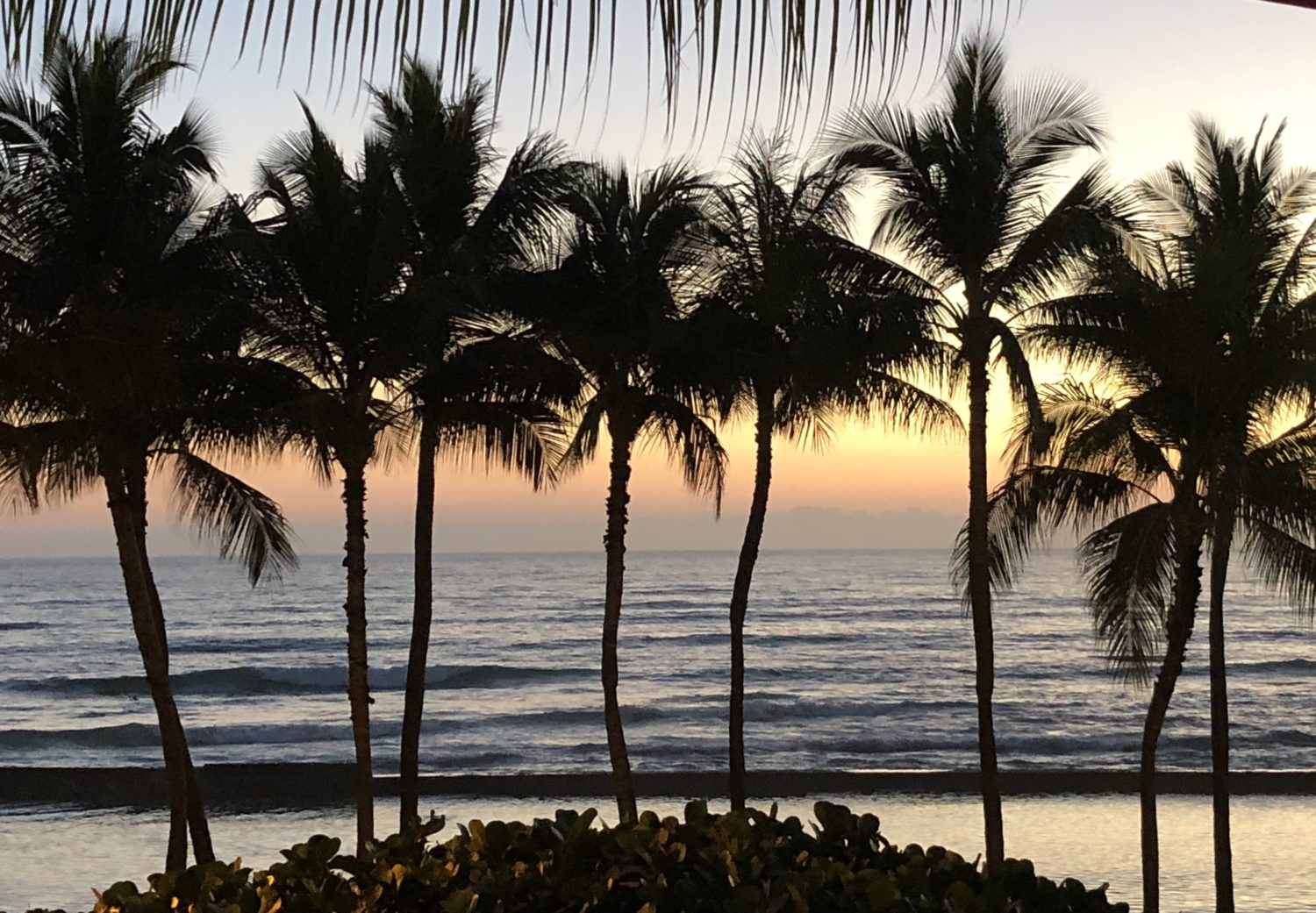
New Zealand’s South Island: Welcome to Middle Earth! Earthquakes, Albatrosses, and Breathtaking Landscapes Everywhere
Eleanor Catton had me at the ball gowns lined with gold sewn into their hems.

The 1861 discovery of gold set off a frenzy of fortune seekers stampeding south, way south, to New Zealand’s wild and empty Otago Peninsula, our next cruise stop. Catton brings this era to riveting life in her 848-page historical novel, The Luminaries, and even though Padre grumbled about hauling my ‘book brick’ his suffering was worth it, at least to me. I adore long reads that hold up, and it will go to a lucky Golden Princess passenger soon, hopefully one with lots of luggage space left.

In Catton’s historical mystery novel I learned what 1860s life might have been like for New Zealand’s South Island gold diggers, ship captains, Maoris, ladies of the night, Chinese immigrants, and opium addicts. An 848-page tome about New Zealand’s South Island seems fitting, since the landscapes here are big – so big – that we struggled to capture the stupendous scenery with our inadequate human eyes. No wonder Peter Jackson filmed many Hobbit Trilogy and Lord of the Rings scenes here. These vast landscapes seem perfect for his epic sagas, although word has it that due to film editing it’s almost impossible to tell from the movies exactly what part of New Zealand you’re looking at in any particular scene.

In the real world we also learned about tree avalanches, drunk birds, ecclesiastical utopias gone bad, why the third wife was one wife too many (see Larnach Castle info), royal albatrosses on the wing, earthquakes, and the sobering aftermath of Christchurch’s recent mass terrorist attack. Oh, and a spot of rough seas, before we glided into the glassy still waters of one of the most magnificent natural landscapes on earth.
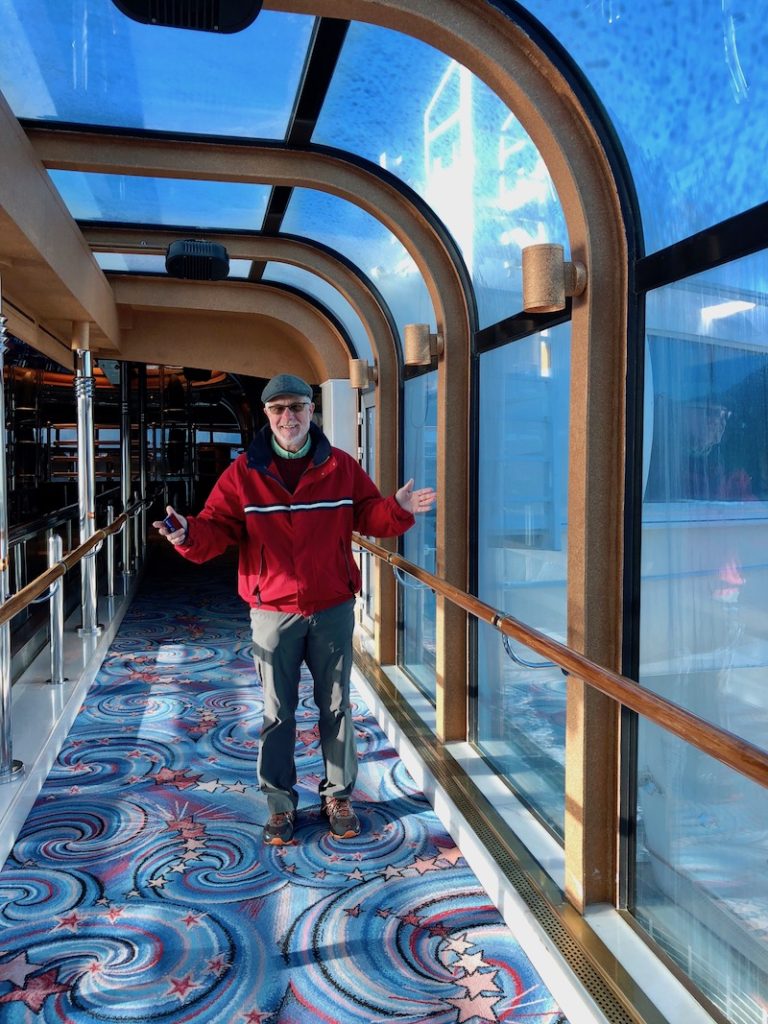
Our cruise director referenced the rough seas when he chirped in his South African accent, “The Golden Princess is having a bit of a rock and roll this morning!” as I sat perched clutching my computer on a tall tipping chair in Skywalker’s, a 17thdeck 1970s-flashback lounge. Swoopy ceiling decorations slammed against the nightclub’s roof, as the ship shuddered and groaned her way through towering seas.
I seem to only get woozy if I spin my way up or down the deck stairs, which I prefer to the ship’s elevator. As the ship pitched and rolled on rock-and-roll day, I made the mistake of doing one too many stair spins, resigning myself to an afternoon of bleak staring-at-the-horizon and sleeping off the seasickness. A spot of sickness is such a small price to pay for cruising through New Zealand’s Fiordlands and the magnificent Milford Sound, though – more than worth it; just a spot of bother, as our cruise director might say.

The raw grandeur of Milford Sound was no match for our massive cruise ship, which normally dominates any port upon arrival. The Golden Princess seemed humbled a bit by the staggering sheer mountain cliffs and forest-draped granite peaks on either side of her. Mysterious dark green canyons stretched off into unspoiled wilderness, and tumbling waterfalls spilled from the steep rock cliffs before plunging into the seas below. The dense green tree cover turns into tree avalanches sometimes, when all that green simply slides off due to the thin loam cover. Glaciers had carved mile-deep fiords all along New Zealand’s southern coastline, and this was just one of many.

We were fortunate to enter Milford Sound while the sun was shining – very fortunate, since the day before it rained 12 inches. Not 1.2 inches. 12 inches – whoa! Rains over 200 days a year here, hence so much verdant green everywhere. By the time we reached Thompson Sound the rains rolled in, and I half expected one of Tolkien’s goblins to emerge from the mist-shrouded mountains with a hatchet to threaten us. An otherworldly landscape here, with only the calls of seabirds and the gentle lapping of our ship wake to disturb the stillness. Oh, and the clicks of a couple thousand cameras lined up along the ship rails snapping away. The top deck passenger mob seemed subdued throughout our fiordland explorations, hushed and awed perhaps by the magnificence surrounding us at every turn.


Unique bird species have adapted to this extreme environment, including the wood pigeon. He loves fushia tree berries, and waits until the end of the season when the berry sugar is so concentrated it’s fermenting to gorge himself until he’s drunk and wobbling. Then he falls off branches and flies into trees. Sounds a bit like a cruise passenger with the inclusive drinks package (I’ve only seen a couple of them wobbling, so far). We also learned about an Alpine parrot scavenger who strips away anything not nailed down, including the rubber off a car or boat. The Yellow Head was better behaved than that parrot, and he ended up on the $100 Kiwi note. No need for Kiwi notes here in the middle of a vast wild wilderness at the bottom of the earth, unless I wanted to hop down to the Princess shops. Not a chance, as some of the most glorious sights I’ve ever seen in my life kept gliding by.

Golden Princess ported at Port Chalmers the next day, where our Back to Nature tour guide Scott picked us up for a scenic drive to Dunedin, founded in 1848. Dunedin’s Scots founders hoped to create an ‘ecclesiastical utopia’ based on medieval notions of a church/state blended community, presided over by a benevolent gentry. Migrants were required to furnish a certificate from their vicar vouching that ‘the applicant is sober, industrious and honest” and that ‘he and all his family are amongst the most respectable in the parish.” That vision went south fast, especially when a lone prospector struck gold in 1861 and all sorts of nefarious types arrived to take advantage of the opportunities for nefariousness a gold rush provides.


Today Dunedin proudly displays the bluestone brick buildings built by those sober Scots, who named it ‘Dunedin’ since that’s the Gaelic name for Edinburgh – their deliberate attempt to recreate home. Otago University reminded us of Harvard, its impressive arched buildings framed by leafy greenery on a crisp fall day. The lavishly decorated Dunedin Railway Station, built in 1906, houses an art museum and New Zealand’s only sports museum. Guess where I went (to purchase a lovely oil painting) and guess where Padre went. Yep, he’s a newly-minted fan of New Zealand’s premiere rugby team, the All Blacks, and snagged himself a cap from the museum gift shop. Of course!

Good thing we didn’t choose the Taieri Gorge Railway journey for our day’s excursion, which many other passengers did: The train broke down, we heard, leaving guests stranded for a couple hours. If you want to hear cruise passengers complaining at dinner, just strand them on the side of a mountain for an hour or two. That’ll do it. A rather dour lady at dinner immediately ordered a gin and tonic when she sat down, noting that she took the ‘train ride from hell’ today, hence the G & T. We have heard the train journey is lovely and scenic, though, and I’m sure they’ll get it fixed since it is one of the most popular tourist activities in town.
No breakdowns in our small van, as we headed out of town to visit the South Island’s only castle, built during the heady days of the gold rush. It reminded us of California’s Hearst Castle, although not near as lavish, but it did come complete with an ego-driven patriarch, William Larnach. He went through three wives, until the last one had an affair with his youngest son. Ouch. Beset by financial disasters and marital problems (and depressed, I’m sure), Larnach didn’t go quietly; he committed suicide in Parliament’s chambers.


So now he’s remembered for his tragic end, rather than the astounding gardens surrounding his castle today. That’s because the gardens weren’t his idea, not so much. His castle fell to ruin after he died, until the Barker family took charge in 1967 and began restoring the place as their life’s work. We didn’t tour the inside of the castle, and those who paid the extra charge to do so reported it was rather ‘meh’ – but the gardens? Absolutely stunning, especially the South Seas Garden and the Out of Africa stairway section, with plantings inspired by the southern ocean’s surrounding landforms and sea patterns. The territorial South Island views from the pathways took our breath away.
One thing the castle did have, though, which we appreciated as the biting cold autumn wind seeped into our bones: A roaring fire in the massive ballroom fireplace, a delicious bowl of kumara soup (a New Zealand sweet potato), and a foaming tall mocha sprinkled with marshmallows. Too bad Larnarch lost the ability to appreciate the things that truly make life worth living, like a steaming bowl of kumara soup. Plenty to live for at his castle, but obviously he had the disease that takes the life out of life (depression), and didn’t get the help he needed. Ironically, his hilltop castle brings much joy to people today as a popular site for weddings.

The rest of the day we spent on the Otago Peninsula, a nature lover’s paradise filled with the most amazing birds and other wildlife. We know about the birds because our guide Scott, currently studying for his PHd in zoology, could describe any bird in sight, no matter how far away, an incredibly detailed field guide in human form. We’d try to stump him, but to no avail – this guy was GOOD. Scott was thrilled for us when we spotted albatrosses soaring overhead at Taiaroa Head’s Royal Albatross Preserve. With wingspans up to 10 feet wide, albatrosses love the wind for obvious reasons, and boy do they soar. At certain times of year they fly for months at a time, and I’m sure their massive wings come in handy on long sea journeys.



Scott took us to remote areas of his beloved Otago Peninsula – no big tour buses anywhere in sight. We climbed over fences and hiked through pastureland to reach a deserted beach at the base of dramatic cliffs, our footprints the only ones in the golden sand. And we navigated a dramatic, wind-bent copse tunnel of trees to a high lookout over seacliffs, where we gazed off toward Antarctica and ogled the stunning views.
The next day our guide Sally picked us up at the Akaroa tender port, which sits in the middle of the charming French-influenced seaside village. With just a glimpse out the tender window, we recognized Middle Earth – no wonder Tolkien used areas around Akaroa for the setting of his mythical Edoras. We spent the morning taking in the jaw-dropping beauty of the Banks Peninsula, and then set off over winding mountain roads and rolling pasturelands to Christchurch.
Sally shared many details of Christchurch’s 2010-2011 earthquakes, which effectively leveled downtown Christchurch, The city still struggles to recover eight years later, scars still very much in evidence, both physical and emotional. Sally was teaching school downtown when the worst earthquake struck, in charge of 100 students, and her own home was completely destroyed.

She shared matter-of-factly how she and her family managed after the city’s destruction, and how many of the destroyed buildings were simply cleared away and replaced with car parks and green spaces. Suburban streets were swamped with liquefaction, a black silty deposit from underground, and more than half of the central business district had to be demolished. Thousands of Christchurch residents moved away and never returned. The city core is showing signs of life again, and we ate lunch in one of the new shopping complexes downtown. It seemed a source of pride to Sally that the complex was buzzing, after years when Christchurch’s downtown core was all but abandoned.
Formerly a source of civic pride, Christchurch’s Anglican Cathedral serves as a battleground today between preservationists who want it restored, and certain church officials (not all) who want to tear it down to build a new cathedral. Ironically, the supposedly temporary Cardboard Cathedral on the edge of downtown is still in use as a replacement. (And yes it’s really made of cardboard, but it doesn’t disintegrate when it rains or it would have been long gone.) The ragged ruins of the old cathedral remain downtown, standing in mute testament to the massive power of earth’s blind destructive forces unleashed.

Don’t want to be walking around downtown Seattle when the big one hits, after seeing this. Christchurch’s earthquakes registered at 7.1 and 6.3, and Seattle could suffer a shake much stronger. I don’t think much will still be standing, just as the experts have warned us. Very unsettling to imagine.
Christchurch’s Earthquake Victims Memorial spoke to the emotional pain resulting from all the destruction, as rows of empty white chairs, 185 earthquake victims in all – classroom chairs, office chairs, wheelchairs, stools, car seats – sit lined up and waiting. Reminded me of my old classroom before the students arrived, but this classroom will forever stay empty, even as grief fades and life goes on.

Christchurch’s recent terrorist attack, in which 50 people were shot dead, must have deeply unsettled Christchurch’s citizens, still dealing with lingering earthquake trauma. I could tell Sally was reluctant to speak of it and I can’t blame her at all, considering what people have been through here. She did drive us by the mosque where the attack happened, as well as by the flower tributes still in place along the fences at beautiful Hagley Park downtown. When I set up our tours, Back to Nature’s director shared with me how disturbing the attack was to his family, and to the community, since the shooter lived close to his daughter’s school in Dunedin, and his wife thought he recognized him.
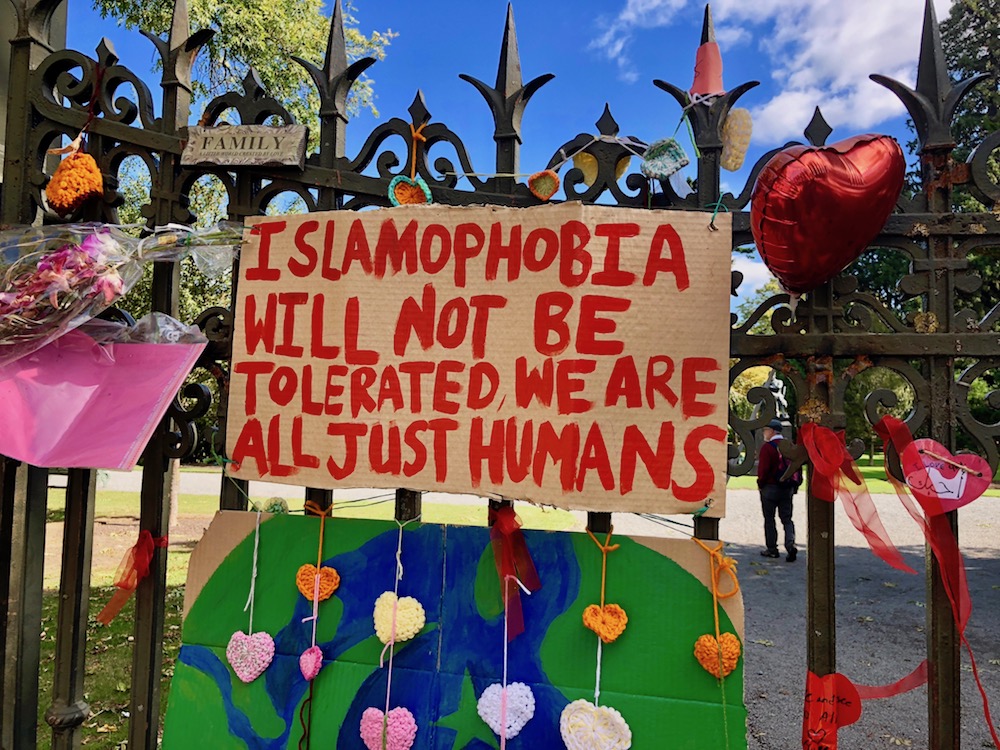
Yet Kiwis have decisively responded with love and compassion for violence victims, twice now in recent memory, and I expect as they continue to move forward they will serve as a model for the rest of us. They are showing us how to pick up and keep going despite whatever befalls us, and I plan to follow and cheer on Christchurch’s recovery. It is a beautiful, big-hearted place, and I do hope we are fortunate enough to return to this lovely city someday.
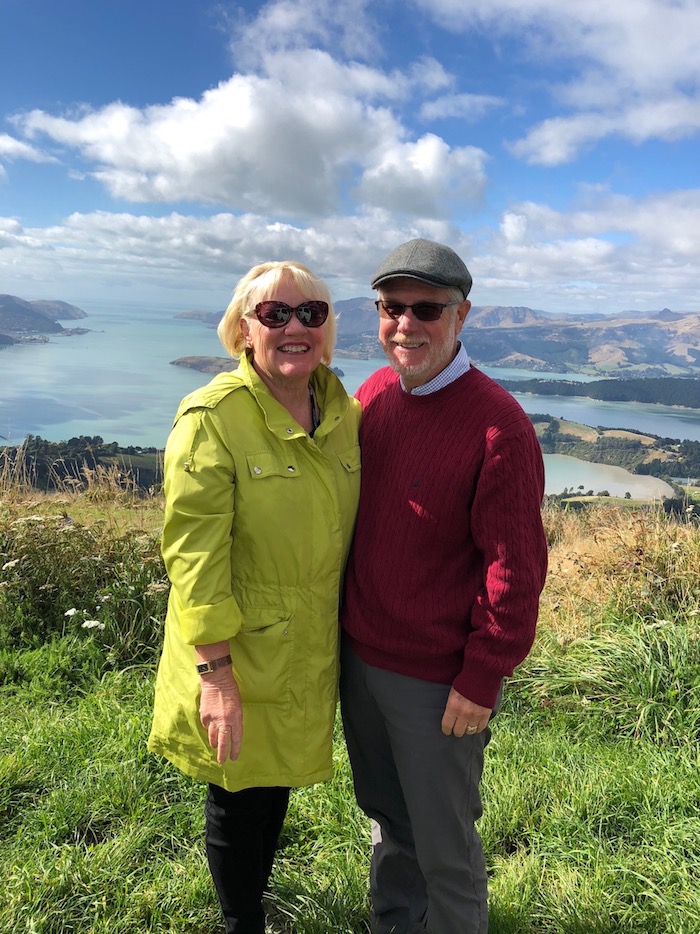
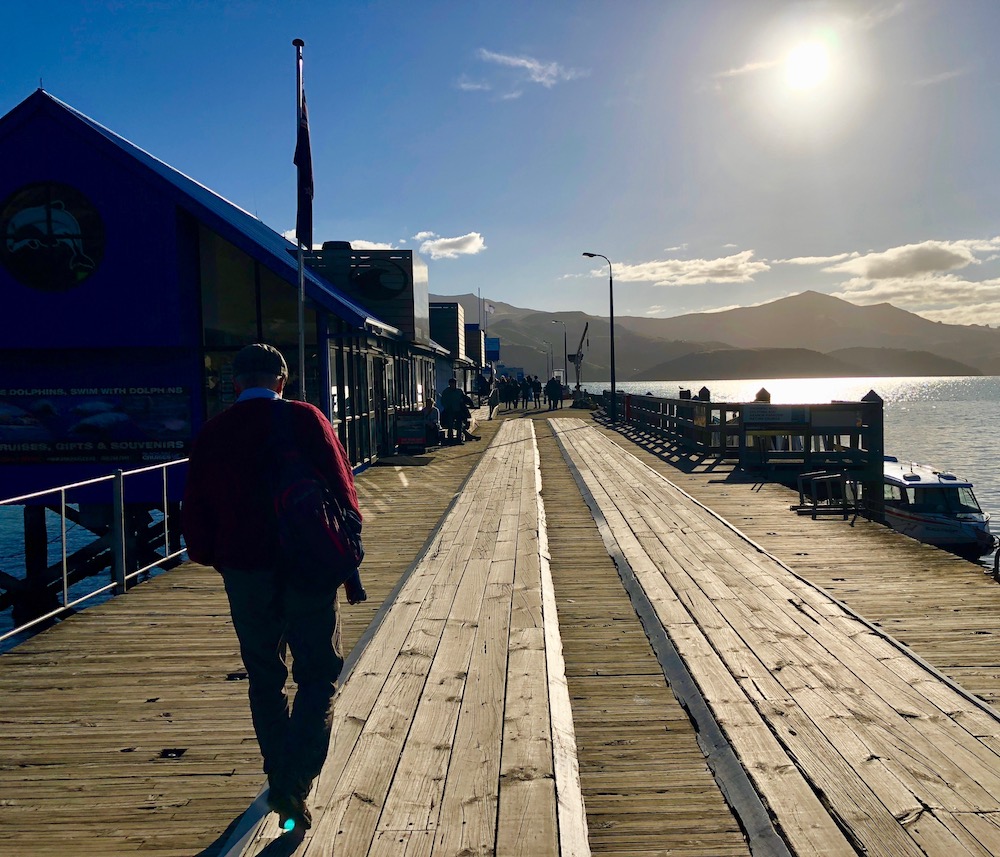
Golden Princess sailed away from the South Island as the lowering sun cast Tolkien’s Edora in gold shades – what a gorgeous place. Next stop: New Zealand’s North Island, and more Tolkien visitations: Did someone say Hobbit holes and ginger beer at the Green Dragon? We’re on our way.
Thanks as always for following along, everyone!
